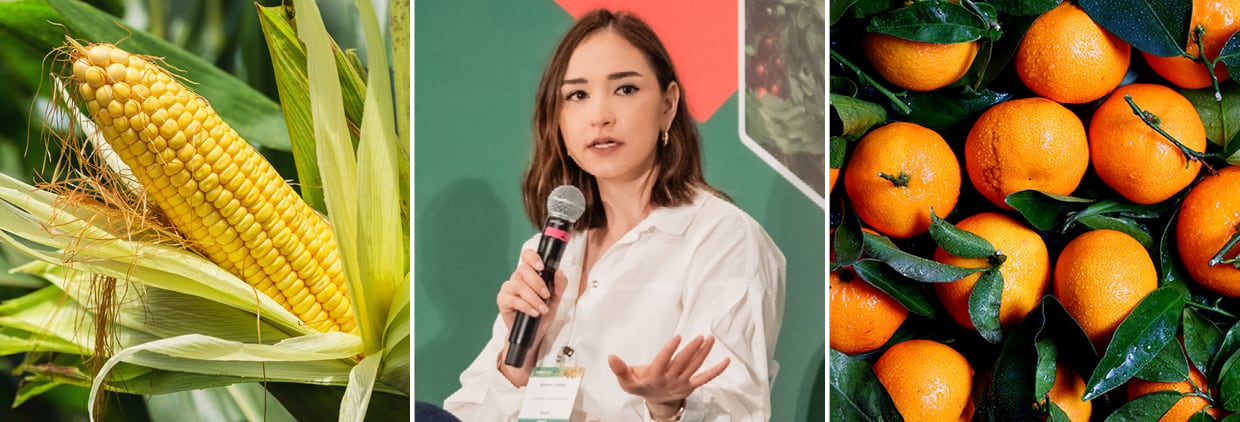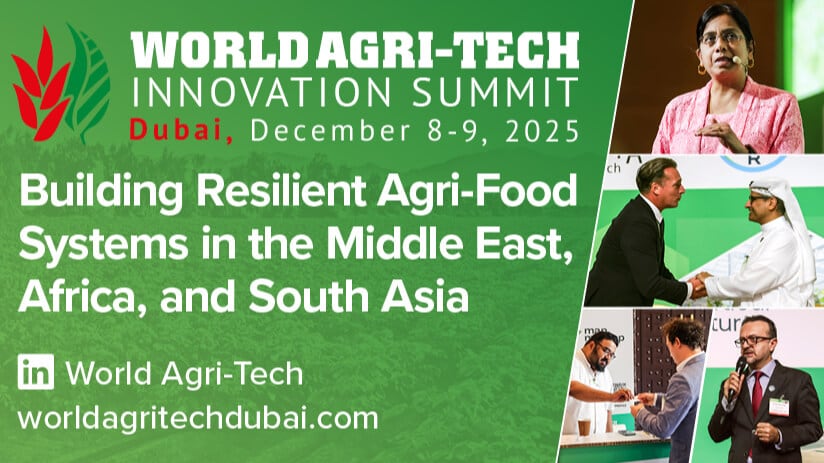The future of Mexican agriculture stands at a critical crossroads.
The country is a major producer of agricultural produce including tomatoes, berries, avocados and agave, exporting approximately 500,000 tons of berries annually, with 90% volume received by the US and Canada.¹
While the country’s high-value agri-produce is key to the national economy, its reliance on foreign trade, particularly with the US, has been challenged by increasing trade uncertainty and Trump’s tariff hikes. As Mexico’s primary trading partner, this creates significant challenges.
Over the past decade, cross-border trade of food and agricultural products between the US and Mexico has doubled to $80 billion.² Of the $49 billion US imports of Mexican products, the top three categories are: fresh fruit and vegetables ($18.8 billion); alcoholic beverages ($11.6 billion); and processed food ($10.8 billion).²
The reliance with the US creates vulnerability for Mexican farmers. Sudden changes in US trade policy or market demand can have significant ripple effects across the country’s economy.
This uncertainty raises an important question: how much should one country rely on almost a single export market? Would diversifying export markets create further challenges and, if so, how should they be addressed?
Diversification of markets
In order to reduce risk and increase economic resilience, diversifying export markets is certainly a consideration. However sending produce further overseas also comes with its own set of challenges.
Air freight, while quicker, can be significantly more expensive than sea or land freight. Slower export routes from Mexico to countries in Europe involve temperature-controlled supply chains to maintain freshness and quality during long-distance shipping. Can market diversification examples from South America provide a blueprint for success?
Peru, for example, has developed export markets in the EU and Asia in addition to the US, with 2021 figures showing trade relationships with 69 countries.³ By spreading exports across multiple destinations, diversified exporters can turn to alternative buyers when faced with tariffs and other barriers.³
Because Mexico’s high biodiversity and climate can produce a wide variety of crops, this opens doors to other high-potential trade options in international markets. For example, although Mexico largely depends on the US market to export avocados, there is increasing demand in Asia, particularly in China and Japan. In 2023, Japan’s avocado imports surged to approximately 62,000 metric tons, a 22% increase from the previous year.⁴
Additionally, products like dragon fruit (pitahaya), soursop (guanábana), and passion fruit (maracuyá) are growing in demand in international markets within Europe and Asia, thanks to their nutritional qualities and use in gourmet cuisine.
Challenges for food security
Looming tariffs are not the only challenge for Mexican food security. Its agricultural produce relies heavily on small and medium-scale producers who generate much of Mexico’s food supply, with almost 50% produced by small-scale farms.⁵
These producers generate a significant proportion of the country’s produce but can lack the funding required to scale or shift to sustainable practices. Many small-scale producers, typically in Central and Southern Mexico, face significant challenges in accessing traditional bank loans due to their size and perceived risk. Instead, banks are more inclined to finance larger-scale agricultural operations in the North.
“Smallholder farmers are the backbone of Mexico’s agricultural system, yet they’ve historically been left out of formal financing. Most lack access to credit because the system wasn’t designed with them in mind,” says Hugo Garduño Ortega, CEO, Verqor.
Lack of funding can have wide-reaching consequences for food security; it impacts productivity, reduces the ability to invest in improved farming techniques and limits access to markets.
“At Verqor, we see this gap not as a challenge but as one of the largest untapped opportunities in Mexican agriculture. When smallholders don’t have access to capital, they underinvest in their crops, often relying on low-quality inputs or selling prematurely to survive. This limits productivity and perpetuates cycles of poverty,” adds Ortega.
Climate and weather conditions is another key factor affecting Mexican food security. At the end of May 2025, 76% of the country was experiencing drought, the most widespread drought in Mexico since 2011.⁶
These conditions have led to water scarcity and enhanced heat waves across the region, creating hostile environments for farming: reducing crop yields; increasing the risk of crop fires; and damaging crops and livestock, all of which contribute to reduced food production.
One contributing factor here is inefficiencies in irrigation systems; 75.5% of water extracted from natural sources is used for agriculture of which 65% is wasted.⁷
In order to improve efficiency and reduce waste, the number of hectares cultivated using technical irrigation – encompassing modern methods like drip and sprinkler irrigation – must be increased. Globally, crop yields from rainfed cultivation are about 50% lower than those obtained under irrigated conditions.⁸
Logistical innovation, traceability, and AI
To meet the demand for new export markets and reduce systemic vulnerabilities, investment into a new generation of technology and data-driven practices is needed.
One area that requires investment is logistical innovation, particularly in cold chain logistics and post-harvest technology. Traditional logistic frameworks are characterized by inefficiencies, high costs, and limited technological integration. Improving these systems is essential not only to extend the shelf life of fresh produce but also to preserve quality and meet the requirements of more remote markets.
The development of robust traceability mechanisms is also important. As trade agreements grow more complex, verifying the origin and journey of food is a critical factor for market success. Investing in these mechanisms can help to validate Mexico’s credibility in global markets.
“Traceability is becoming non-negotiable in global trade. Without it, Mexican exports face increasing barriers in markets like the US and Europe. Buyers demand transparency: where the crop was grown, who grew it, how it was treated,” says Verqor’s Ortega.
“The challenge is that systems are often complex and costly, making them inaccessible to smallholders who don’t have the digital infrastructure, training, or even a bank account in many cases.”
Data analytics and AI are also powerful tools which can help improve the efficiency of farms, and in turn support supply chain resilience. AI can be used to analyze weather patterns, market trends to forecast crop yields, predict demands, and reduce food waste. Under the strain of unpredictable climate conditions, such tools can provide data-driven insights to improve decision making.
However, implementing these tools is a costly investment, especially for small-scale farms. To help offset these costs and drive innovation, governments are stepping in to create targeted investment programs to help improve domestic production.
Investment to increase domestic food production
In April 2025, the Mexican government launched the Harvesting Sovereignty program to improve domestic production and reduce reliance on exports.⁹ With targeted support for staple crops, the comprehensive support program is designed for small and medium-scale producers to increase the national supply of basic food.
Its key aims include:
- Investment into increasing domestic food production on staples like corn, wheat, and soy to help reduce Mexican reliance on the US market
- Loans of up to MXN $1.3 million, with a maximum annual interest rate of 9%
- Support for the acquisition of insurance for a guaranteed minimum price
As part of the program, the Ministry of Agriculture and Rural Development (SADER) signed an agreement with the National Confederation of Agricultural Merchants of Central Markets (CONACCA) to boost the commercial linkages of small and medium producers. This will allow producers to sell their products directly, temporarily, and without cost. SADER has also pledged to invest MXN $80 billion by 2030 to strengthen small and medium-scale agricultural production to ensure food security for the Mexican population.
To tackle droughts across the country, the Mexican government has proposed the National Irrigation Modernization Program which aims to improve the distribution of water resources for human consumption while optimizing agricultural production. The program plans to invest MXN $62.8 billion for the full term and MXN $7.71 billion in 2025 to modernize irrigation systems across more than 200,000ha, benefiting at least 225,000 agricultural producers.¹⁰⁻¹¹
Strengthening food system resilience
As Mexico navigates the challenges of securing its agricultural future, innovation and investment will play pivotal roles in shaping a resilient and sustainable food system. Driving this innovation, the World Agri-Tech Innovation Summit is returning to Mexico on 28-29 October.
Fostering collaboration across the agri-food chain, the summit will connect over 400 senior decision-makers, including agribusiness leaders, tech innovators, investors, and policymakers, to explore how innovation, investment, and financing are shaping a more resilient and sustainable food system.
Including expert panels, interactive roundtables, start-up showcases, curated networking, and 1:1 meetings, the summit will engage in transformative conversations around financing sustainable practices, advancing water technologies, and unlocking global markets through post-harvest and digital innovations.
Register here for the World Agri-Tech Innovation Summit Mexico for two days of discussions and networking opportunities. Super Early Bird pricing ends on 14 August and Early Bird pricing ends on 11 September.
References
- Mexico Business. Mexican Berry Exports Grow as Demand for Healthy Foods Increases.
- CoBANK. Mexico Poised to Claim Top Export Spot for U.S. Ag Products.
- Mexico Business. Mexico at Crossroads: The Need to Diversify Agriculture Exports.
- Modor Intelligence. Japan Avocado Market Size & Share Analysis - Growth Trends & Forecasts (2025 - 2030).
- Markets for a sustainable future. Small producers, Mexico’s agricultural force.
- National Centers for Environmental Information. NADM Maps.
- El Economista. Water is scarce, and farmers... irrigate it: the challenge of irrigation technology in Mexico.
- Jaramillo, S.; et al. Sustainable Transformation of Rainfed to Irrigated Agriculture Through Water Harvesting and Smart Crop Management Practices.Front. Sustain. Food Syst., 2020; Vol 4.
- Gobierno de Mexico. Harvesting Sovereignty.
- Mexico Business. Mexico to Invest US$1.57 Billion in 37 Water Projects.
- Mexico Business. National Irrigation Modernization Program Advances.








